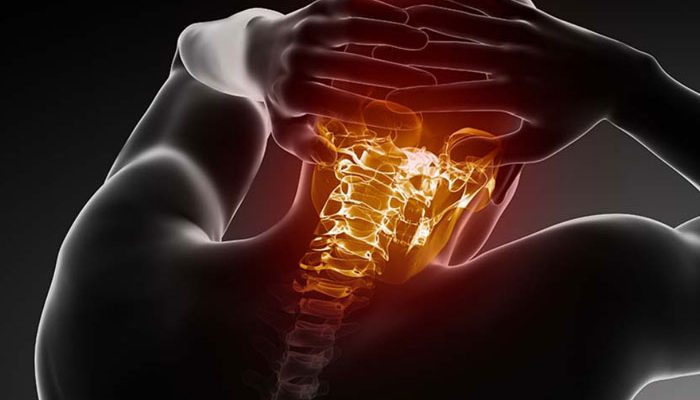Often times, cervical disc herniation results in pain due to compressed nerves. Some people who suffer with pain due to one or more herniated disc(s) may experience pain differently. Pain could be dull or sharp, be experienced between the shoulder blades, and may travel into the arms, hands and fingers. Pain that travels is oftentimes referred to by medical professionals as “radiating” pain. Patients with this condition also report varying sensations, such as numbness, tingling, and/or muscle spasms. Naturally, certain types of movements and activities will worsen the pain.
The Danger
One of the most concerning aspects of a cervical herniated disc is that it can cause spinal cord compression. In this situation, disc material actually begins pushing on the spinal cord. This condition is very serious and can be a cause for an aggressive treatment plan or urgent surgical intervention. Spinal cord compression can quickly make it difficult to walk, interfere with fine motor skills in the hands and arms, and can even cause an “electric shock” type of feeling in the torso or legs.
Who Is Affected?
Anyone can experience a cervical herniated disc, but those who use tobacco, are overweight, and do not exercise regularly are at a greater risk. The risk of developing a cervical herniated disc also increases with age, as natural biochemical changes cause discs to gradually become weaker and less resilient. Poor posture, incorrect body mechanics, incorrect lifting, twisting, and injury are also common causes of this condition. It is also important to note that a herniated disc may develop suddenly or slowly. Gradual development over a period of weeks or even months is not uncommon.
Stages Of Cervical Disc Herniation
Cervical Disc Herniation is made up of four distinct stages.
Stage #1: Disc degeneration. This stage involves the weakening and/or thinning of the disc, due to chemical changes that naturally occur as a person ages. While this stage does not yet include herniation, the disc is drying out, making it less able to absorb shock, and therefore more vulnerable.
Related: Understanding Degenerative Disc Disease
Stage #2: Prolapse: This stage is also referred to as a bulging disc. At this point, the position of the disc changes. Slight impingement into the spinal canal or spinal nerves occur.
Stage #3: Extrusion: A spinal disc is often compared to a jelly donut, as there is an outside wall to a disc and a soft center. The “jelly” is the inner spongy portion of the disc, which is called the nucleus polposus. Hard bands of fibrous tissue called annulus fibrosis surround the jelly nucleus. During the extrusion stage, the inner portion of the intervertebral disc breaks through the fibrous wall (annulus fibrosus) but remains within the disc.
Stage #4: Sequestration: This final stage involves the jelly-like nucleus polposus breaking all the way through the fibrous wall (annulus fibrosus) and moving outside the disc into the spinal canal.
Treatment Options
Cervical disc herniation is quite common, and it is important to understand that not all patients will require neck surgery. In fact, many patients will find that nonsurgical treatment options, such as physical therapy or taking non-steroidal anti-inflammatory drugs, will effectively relieve pain within 4 to 6 weeks.
If symptoms do worsen or if the herniated disc is compressing the spinal cord (called myelopathy), surgery may be necessary.
If you suspect that you may be experiencing a cervical herniated disc, or any other spine condition, come and see our Spine Specialists here at the Stridewell Same-Day Spine Clinic. You will leave our practice with a diagnosis and treatment plan. If you are a good candidate for surgery, we will consult with you on minimally invasive options that provide effective results with a short recovery time. Stridewell Tips
read article


